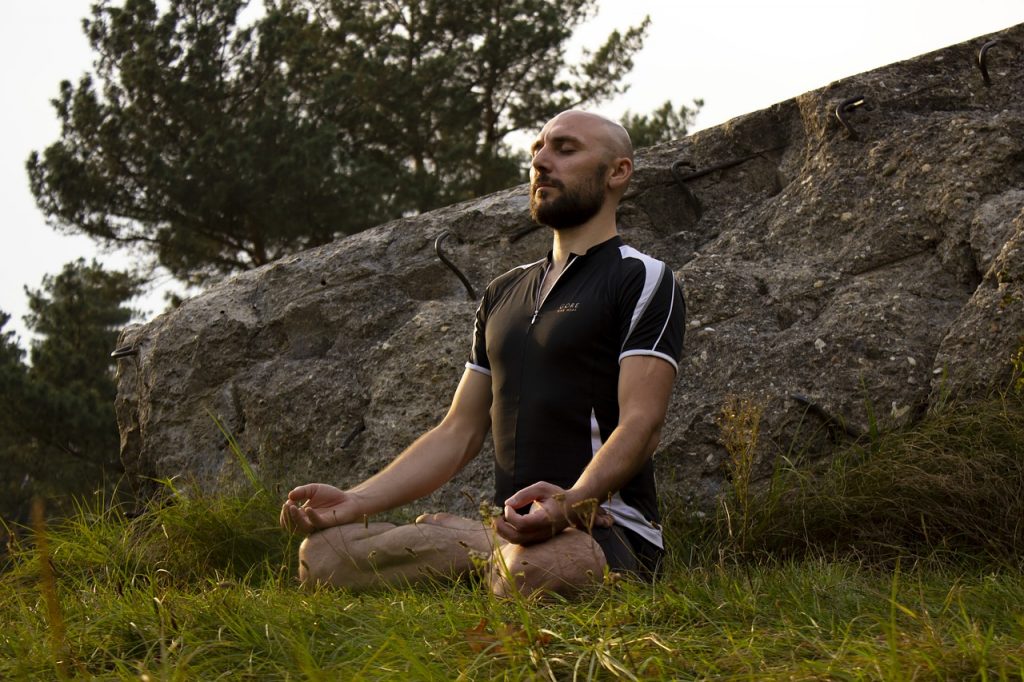Meditation Practice
The Three Steps Of Meditation Practice

The First Step...
…is to calm the mind. Close your eyes and think of some beautiful scenery. Then do some deep breathing – Breathe in and out deeply in a slow and relaxed manner. Do not hold the breath either in or out and do not strain. Do this ten to fifteen times. (There are more advanced breathing techniques to aid meditation, but these should not be attempted without the guidance of a teacher).
After your breathing exercise of meditation practice, just sit quietly with your eyes closed and try to observe your thoughts. Your thoughts will be wandering, jumping from one train of thought to another. This is quite normal so do not get discouraged. Often you will get immersed in your thoughts and lose awareness of observing these thoughts. As soon as you realize this, start observing them again. Try to observe your thoughts as a detached observer without passing any judgment. Once you are able to observe your thoughts as a detached observer, ask your self as to who is doing the thinking and who is doing the observing. Think about it for some time and you will soon realize that the real you is the observer and is distinct from your mind which is the observed object. Realizing that the real you is neither your body nor your mind, is a major step in your spiritual journey. This realization enables you to take a detached view of your thoughts and makes it easier to bring them under control. Until you know what your mind is doing, you cannot control it. For a few weeks of meditation practice try to observe your thoughts until you can observe them for about five minutes without getting immersed in them.
The Next Step...
…is to meditate on an object. It is better to select an object which has significance for you. It could be a candle, flower, dot, religious icon, or the tip of your nose etc. Focus on the object for a short while and then close your eyes and try to visualize the object in your mind. As the object fades in your mind, open your eyes again and focus on the object for a short while before closing your eyes and visualizing it mentally. Over a period of time, you will find that you are being able to meditate on the object for longer and longer. Stray thoughts will often intrude upon your meditation without you being conscious of this. As you become aware of the stray thoughts, direct your mind back to the object of meditation. Each meditation session should typically last from fifteen to thirty minutes. The longer you can meditate on one object, the more focused your mind will become. However just spending the time day dreaming without being aware of your thoughts is not of much use.
Once you are able to focus on the object of your meditation, to the exclusion of all other thoughts, for a significant amount of time (over five minutes of uninterrupted concentration), you are ready to advance to the next stage of meditation. This is best learned directly from a teacher.
Conclusion
For most people leading busy lives, the basic stage of meditation described above is sufficient to bring them significant benefits in terms of health and well being and to induce a feeling of sustained happiness. In the early stages of practice, the feeling of happiness wears off soon after the meditation session ends, but over course of time the effects are more prolonged. If time permits, practice meditation again in the evening or night. This second daily session will reinforce the beneficial effects of meditation. After a few months of this practice, you will find significant changes happening in life. Your approach to situations will be more tolerant, your relationships and health will improve and your will experience a sustained feeling of happiness.
The period just after the conclusion of your meditation practice is an excellent time to plan your day and to ponder over the problems or situations you are facing in your life. Often good solutions to come intuitively to you when you are in this state of mind.